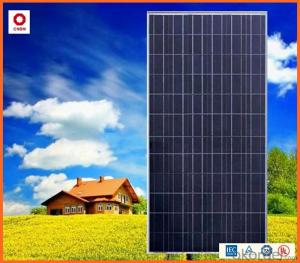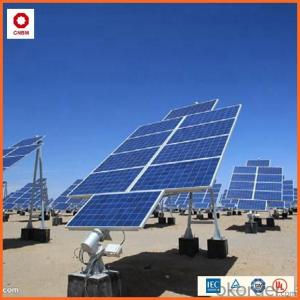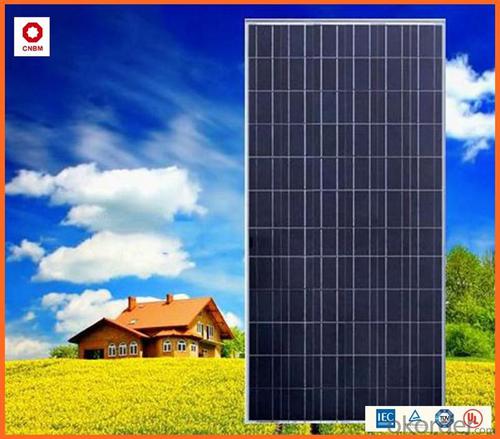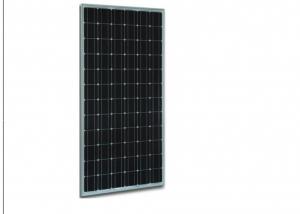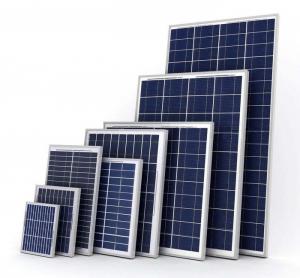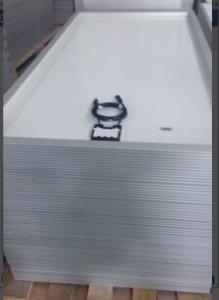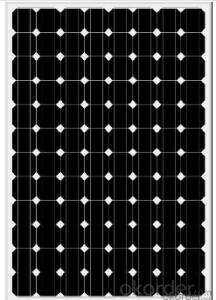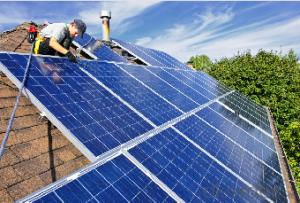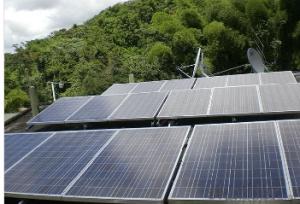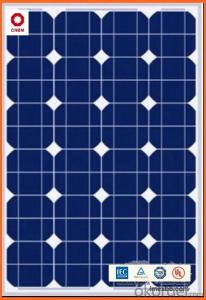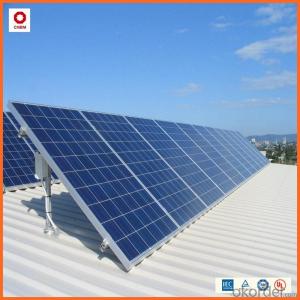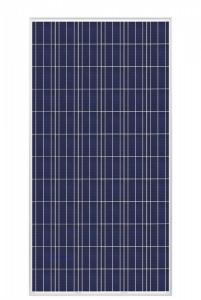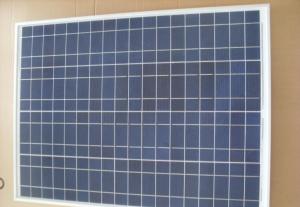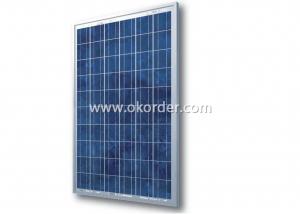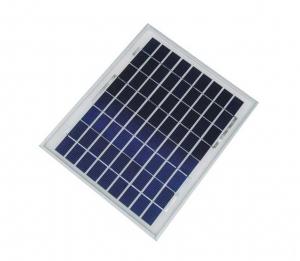Rec 400 Solar Panels - 260W Monocrystalline Silicon Solar Module with CE/IEC/TUV/ISO Approval Standard Solar
- Loading Port:
- China main port
- Payment Terms:
- TT OR LC
- Min Order Qty:
- 100 watt
- Supply Capability:
- 1000000 watt/month
OKorder Service Pledge
OKorder Financial Service
You Might Also Like
Specification
Solar 260W Monocrystalline Silicon Solar Module With CE/IEC/TUV/ISO Approval Standard Solar
CNBM International Corporation is a professional solar panel manufacturer in China for CNBM brand . Silicon panel ( silicon module), as our main product, has high quality and good service. Our products are very popular in Europe, Australia, England, Middle East, Mexico, Argentina, Chili, Singapore and Africa.
Furthermore, our products have gained international authorized certificates like TUV, UL and CE.
China National Building Material (Group) Corporation (CNBM), established in 1984, is one of the largest State-owned group corporations of building & mechanical materials which specializes in the design, manufacturing and distribution of building materials in the world.
As the whole world turns “green”, CNBM enters into the Photovoltaic Industry in 2005.After 6 years' fast growth, now our annual capacity is 500MW solar panel and 500MW solar cell.
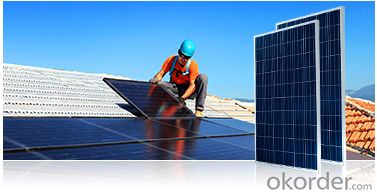
We now provide
• Monocrystalline Solar Panel
• Polycrystalline Solar Panel( multicrystalline silicon Solar Panel)
Features of our products:
• High conversion efficiency mono/poly-crystalline amorphous silicon solar cells
• Modules incorporate high performance bypass diodes to minimize the power drop caused by shading
• High transmittance, low-iron tempered glass
• High performance EVA encapsulant to prevent destroying and water.
• AI frame: without screw, corner connection. 8 holes on the frame can be installed easily
• Good performance of preventing from atrocious weather such as wind and hails
• Certifications: CE IEC TUV VDE UL, Class I
• 10 years 90% power output warranty
As a professional Solar Panel manufacturer and Supplier in China, we have our customers come around the whole world and our specialization has got a worldwide recognition. Meanwhile, with our superior quality, competitive price, prompt and excellent service, As main role in trade section of CNBM Group, CNBM International Corporation supplies products including Monocrystalline Solar Panel, Polycrystalline Solar Panel ( multicrystalline silicon Solar Panel) have received and enjoyed famous reputation in many countries and regions in the world.
- Q: Can solar panels be used for charging electric bicycles?
- Yes, solar panels can be used to charge electric bicycles. Solar panels convert sunlight into electricity, which can then be used to charge the batteries of electric bicycles. This eco-friendly and sustainable method of charging allows for convenient and cost-effective transportation.
- Q: i am wanting to build a small tiny house running 3-4 2 volt 5 watt light bulbs for a lighting source and using a Koolatron Fun Kool 26 Quart 2V Portable Mini Fridge This cooler consumes 4.5 amps at 2 volts. The conversion is: 4.5 amps (X) times 2 volts (=) equals 54 watts. and i want a solar system that will have back up for 2 days with the lights on for probly 5-6 hours a day so theirs no room for error
- you silly ! with Solar there is always room for error . you have to build it in to your numbers . solar is full of errors . So you should plan on producing at 3 times what you expect you will need . then you have enough .
- Q: Can solar panels be used to power a university?
- Yes, solar panels can be used to power a university. Solar panels harness the energy from the sun and convert it into electricity, which can then be used to power various facilities and operations within a university campus. By installing a sufficient number of solar panels, universities can significantly reduce their reliance on traditional energy sources, lower their carbon footprint, and potentially save on energy costs in the long run.
- Q: I want to know that if I put solar panels in space if Pluto can recieve energy for iPods and television
- Yes. Not practical, but possible. Solar cells actually work best at low temperatures. At a little under W/m^2, it'd take a large solar panel to generate enough power for a TV (several tens to hundreds of Watts are needed). And, no offense meant, what TV programs do you think you'll be watching? You sound kind of stupid....
- Q: Alright my family and i are buying a new home in Bradford,Ontario, we we thinking about solar panels and had a couple questions:. how much are they each?2. how many will we need to power a single family home(4 ppl)3. where can we find them in ontario?4.how much money do they really save you?5.what kind of energy do they providfe you withand other basic info or a website i can check out would be great!thanks in advance!
- The demand for residential solar power is growing rapidly. Traditionally, this has been very expensive, ranging between $0,000 and $$40,000 for an average home. Many states have rebates and other financial incentives for solar conversions, but the cost is still out of most people’s reach. What many people don’t realize is that you can save most of the up-front costs by building solar panels for your home yourself. With the many DIY solar kits available now, building a solar panel is simple enough for the average person to do. In fact, you can download your guide right now for under $50, make a trip to the hardware store and pick up your materials for under $200 and get started today.
- Q: How do solar panels affect the property's energy efficiency rating?
- Solar panels can significantly improve a property's energy efficiency rating by generating clean and renewable electricity. As they harness the power of the sun, solar panels reduce reliance on traditional energy sources, resulting in lower energy consumption and reduced greenhouse gas emissions. This increased energy efficiency positively impacts the property's overall energy performance and can potentially lead to improved ratings and lower utility bills.
- Q: How long do solar panels last?
- Solar panels typically have a lifespan of around 25 to 30 years. However, with proper maintenance and care, they can last even longer.
- Q: Still researching for a car that fully uses solar power energy, suggestions would be nice to.
- thats an oxymoron/race car with solar power/forget it/by the by if they start to really harvest the available sources for power the retail price of gas will be 25cents a gallon/
- Q: I don't see much solar panels on people's houses where I live. I got a long time to go before doing so but I was planning on buying a few solar panels when I retire in the far future. In your opinion, is such an investment worth it? Would you buy them? I realize they are very expensive hence why I said when I retire. Thanks for your opinion
- The payback is usually between about 5 and 5 years depending on how expensive electricity is in your area, the rebates available, and where you live (is it sunny most of the time?) Most people that get them don't do it for the investment - they do it to be energy responsible - but it's not a bad way to do both if you have the money to put into it. I personally just pay for the green energy option from my electricity provider. So I am buying power from solar and wind farms, and it cost about 0% more per month. I don't get the benefit of free power, but it comes with a smaller price tag initially, and I think when we all invest in these technologies, the price will improve over time, so energy costs will be lower in the future.
- Q: Can solar panels generate electricity during a blackout?
- No, solar panels cannot generate electricity during a blackout. This is because most solar panel systems are grid-tied and rely on the electricity from the power grid to function. When there is a blackout, the grid-tied solar panels automatically shut off to prevent any electricity from flowing back into the grid, in order to protect utility workers who may be repairing the power lines. However, it is possible to have a backup battery system installed along with the solar panels, which can store excess energy and provide electricity during a blackout.
Send your message to us
Rec 400 Solar Panels - 260W Monocrystalline Silicon Solar Module with CE/IEC/TUV/ISO Approval Standard Solar
- Loading Port:
- China main port
- Payment Terms:
- TT OR LC
- Min Order Qty:
- 100 watt
- Supply Capability:
- 1000000 watt/month
OKorder Service Pledge
OKorder Financial Service
Similar products
Hot products
Hot Searches
Related keywords
